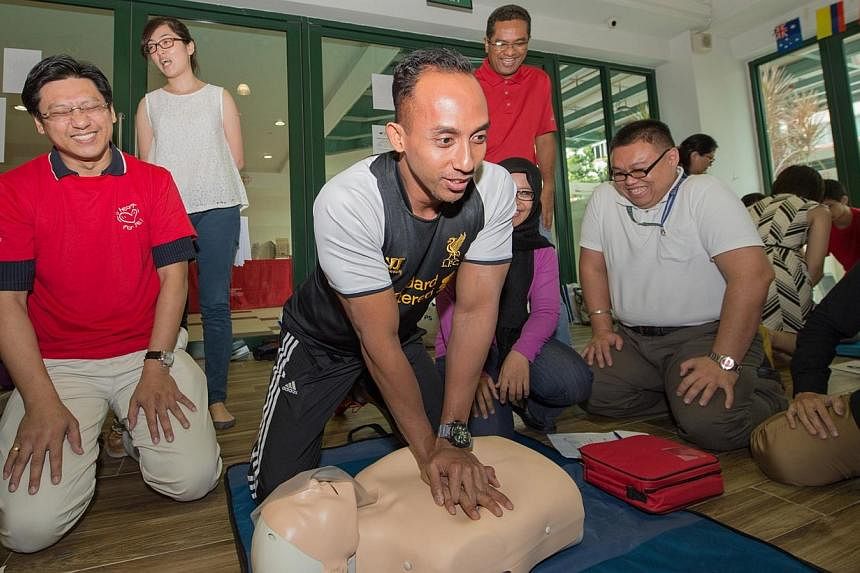SINGAPORE- More cardiac arrest patients are receiving cardiopulmonary resuscitation (CPR) from bystanders, leading to a higher survival rate.
In 2010, only two in 10 cardiac arrest patients received CPR from a bystander. This number has doubled to four in 10 in 2013, thanks to a programme where healthcare staff guide bystanders on how to do CPR over the phone before the ambulance arrives.
When someone suffers a cardiac arrest, his or her heart stops beating - this is different from heart attacks, which is when blood flow to the heart is blocked.
With more bystander CPR, survival rates have increased from 3.6 to 4.6 per cent. "The survival rate for cardiac arrest has increased by about a third and every life counts," said Associate Professor Marcus Ong, senior consultant at the department of emergency medicine at Singapore General Hospital.
Bystander CPR is important as a patient's chance of surviving decreases by 10 per cent every minute after he collapses. In Singapore, it takes an average of 10 minutes for an ambulance to arrive and 46 minutes before the patient gets to hospital. Paramedics may perform additional treatment along the way.
"But if you are relying on paramedics or hospital doctors to save a cardiac arrest patient, it might be too late. Bystander CPR really gives the patient a fighting chance," Dr Ong said. He was speaking at at the Survivor Awards on Wednesday, which honours cardiac arrest patients and their lifesavers. The event was also graced by Minister for Health Gan Kim Yong.
Dr Ong said more can be done to increase survival rates of the condition that affects 1,800 patients each year.
"In places like Washington, survival rates are about 20 per cent. Most strangers would perform CPR on others and kids learn how to do CPR in school," Dr Ong said. He is currently working with the People's Association and several schools like Victoria Junior College to teach the public CPR techniques.
"Most think that they might be called to do CPR on strangers who collapse on the street, when in fact, about 80 per cent of cardiac arrest cases happen at home," Dr Ong said. "So if you learn CPR, more often than not, you might end up saving a loved one,' he added.

